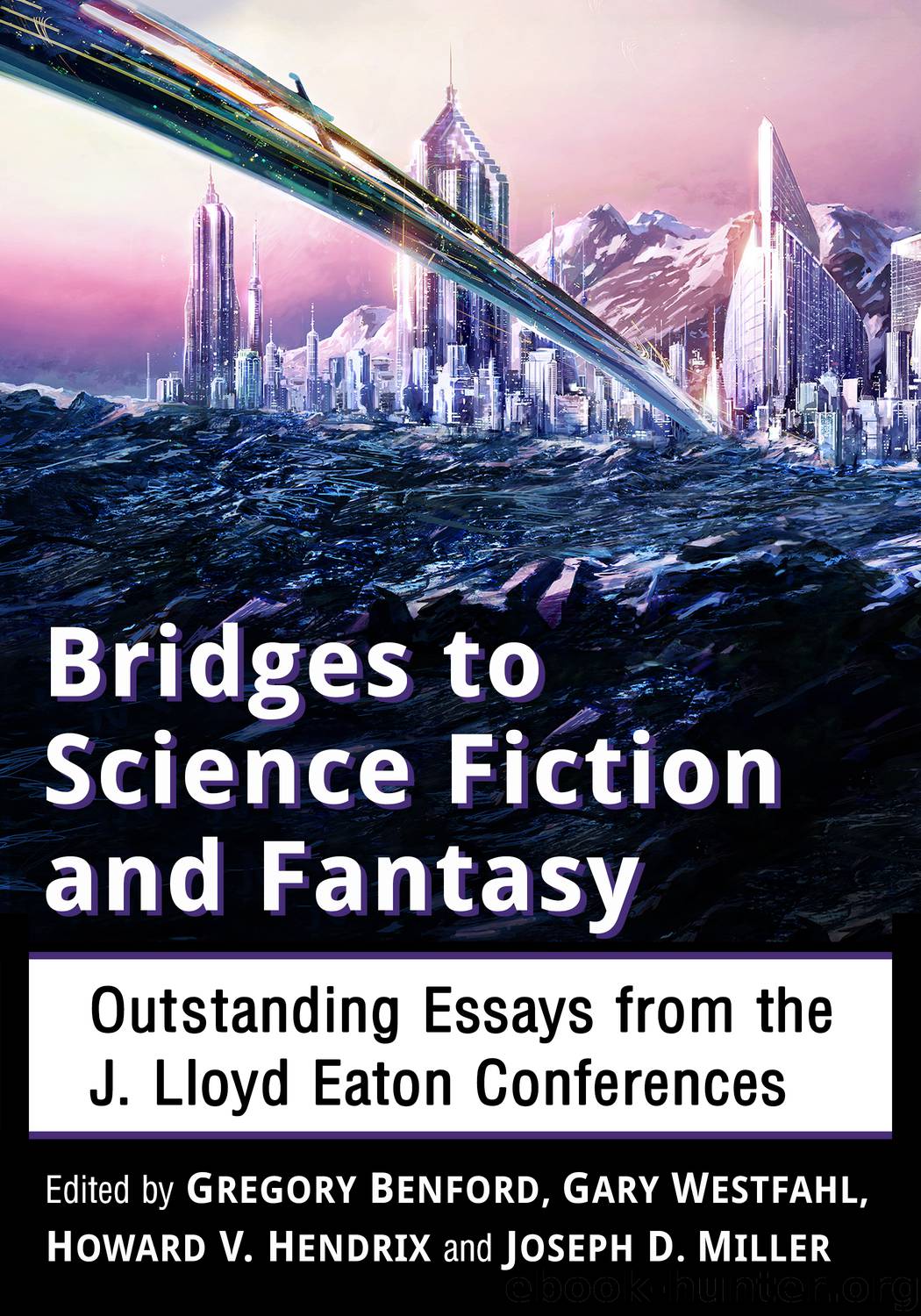Bridges to Science Fiction and Fantasy by Gregory Benford Gary Westfahl

Author:Gregory Benford,,Gary Westfahl
Language: eng
Format: epub
Publisher: McFarland & Company, Inc.
Published: 2018-02-22T16:00:00+00:00
NOTES
1. For an excellent discussion of vampires as key figures in the recent convergence of science fiction, fantasy, and feminism, see Veronica Hollinger, “The Vampire and the Alien: Variations on the Outsider,” Science-Fiction Studies, 16:2 (July 1989), 145–160.
2. Useful perspectives are provided in Claude J. Rawson’s pioneering essays “Cannibalism and Fiction: Reflections on Narrative Form and ‘Extreme’ Situations,” Genre, 10:4 (Winter 1977), 667–711, and “Cannibalism and Fiction, Part II: Love and Eating in Fielding, Mailer, Genet, and Wittig,” Genre, 11:2 (Summer 1978), 227–313. See also Maggie Kilgour, From Communion to Cannibalism: An Anatomy of Metaphors of Incorporation (Princeton: Princeton University Press, 1990).
3. Jonathan Swift, A Modest Proposal, 1729, The Writings of Jonathan Swift, ed. Robert A. Greenberg and William B. Piper (New York: Norton, 1973), 503. Parenthetical page references are to this edition.
4. See Gabrielle Lord, Salt (Victoria, Australia: Penguin Australia, 1990).
5. See Darko Suvin, Metamorphoses of Science Fiction: On the Poetics and History of a Literary Genre (New Haven: Yale University Press, 1979).
6. For a rare modern instance of the cannibal ironically presented as a noble savage welcomed into high society in a novel outside the boundaries of science fiction but nevertheless satirizing related themes such as belief in abduction by aliens, see Tama Janowitz, A Cannibal in Manhattan (New York: Crown, 1987).
7. H.G. Wells, The Time Machine, 1895 (New York: Bantam, 1982), 77–78.
8. James Tiptree, Jr. [Alice Sheldon], “Morality Meat,” 1985, Crown of Stars (New York: Tor, 1990), 93. Parenthetical page references are to this edition.
9. Stephen King, “Survivor Type,” 1982, Skeleton Crew (New York: Signet, 1986), 407–409, 426. Parenthetical page references are to this edition.
10. Kilgour, 150.
11. Sakyo Komatsu, “The Savage Mouth,” 1978, trans. Judith Merril, The Best Japanese Science Fiction Stories, ed. John L. Apostolou and Martin H. Greenberg (New York: Dembner, 1989), 81. Parenthetical page references are to this edition.
12. My colleague Peter Nosco informs me that “the nauseatingly horrific quality of ‘The Savage Mouth’ actually represents a prominent theme in much contemporary Japanese cinema and other forms of popular culture (though, not surprisingly, not those that make it to the export market).” Apparently, then, Komatsu is less distinctive in theme than in turning to science fiction as an effective framework for his statement about the horrifying quality of contemporary life.
13. H. Bruce Franklin, Robert A. Heinlein: America as Science Fiction (Oxford: Oxford University Press, 1980), 121.
14. Franklin, 157.
15. Robert A. Heinlein, Stranger in a Strange Land, 1961 (New York: Berkley, 1982), 11.
16. Robert Plank, “Omnipotent Cannibals in Stranger in a Strange Land,” Robert A. Heinlein, ed. Joseph D. Olander and Martin Harry Greenberg (New York: Taplinger, 1978), 94, 103.
Download
This site does not store any files on its server. We only index and link to content provided by other sites. Please contact the content providers to delete copyright contents if any and email us, we'll remove relevant links or contents immediately.
The Rules Do Not Apply by Ariel Levy(4861)
Bluets by Maggie Nelson(4474)
Too Much and Not the Mood by Durga Chew-Bose(4274)
Pre-Suasion: A Revolutionary Way to Influence and Persuade by Robert Cialdini(4150)
The Motorcycle Diaries by Ernesto Che Guevara(4012)
Walking by Henry David Thoreau(3894)
Schaum's Quick Guide to Writing Great Short Stories by Margaret Lucke(3319)
What If This Were Enough? by Heather Havrilesky(3275)
The Daily Stoic by Holiday Ryan & Hanselman Stephen(3235)
The Day I Stopped Drinking Milk by Sudha Murty(3159)
The Social Psychology of Inequality by Unknown(2940)
Why I Write by George Orwell(2874)
Letters From a Stoic by Seneca(2736)
A Short History of Nearly Everything by Bryson Bill(2629)
A Burst of Light by Audre Lorde(2546)
Insomniac City by Bill Hayes(2499)
Feel Free by Zadie Smith(2435)
Upstream by Mary Oliver(2341)
Miami by Joan Didion(2322)
